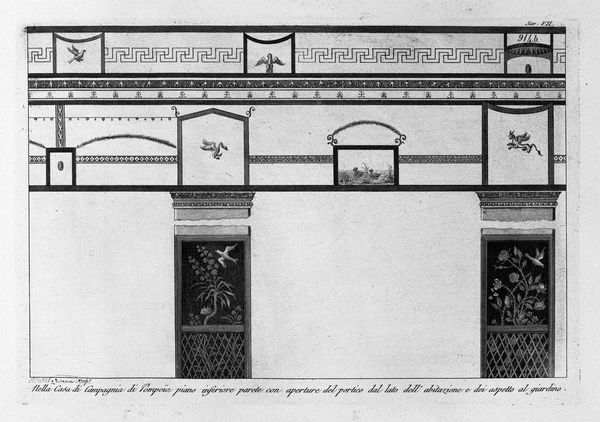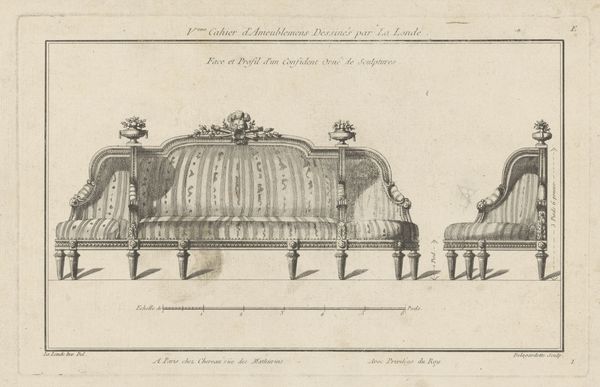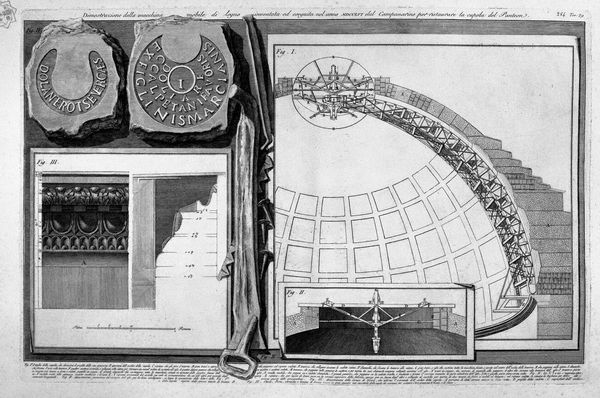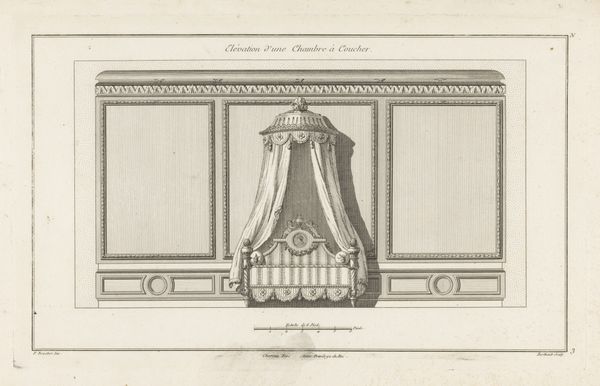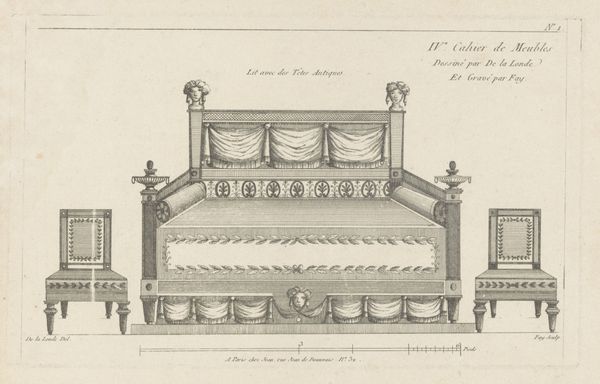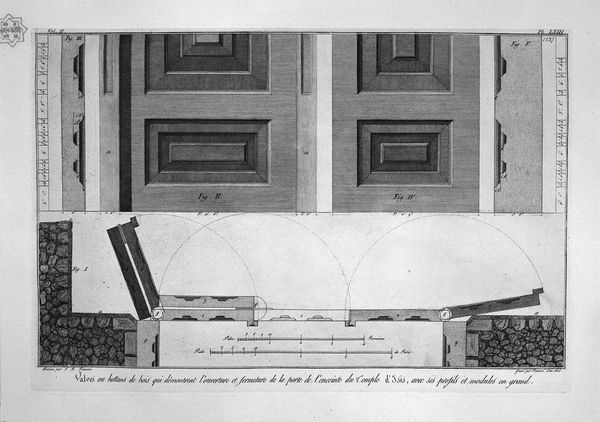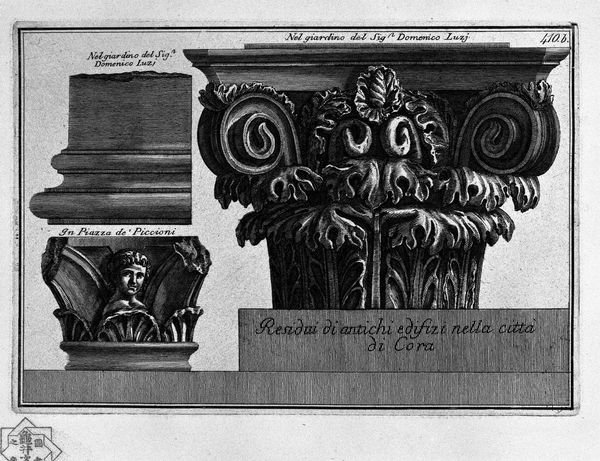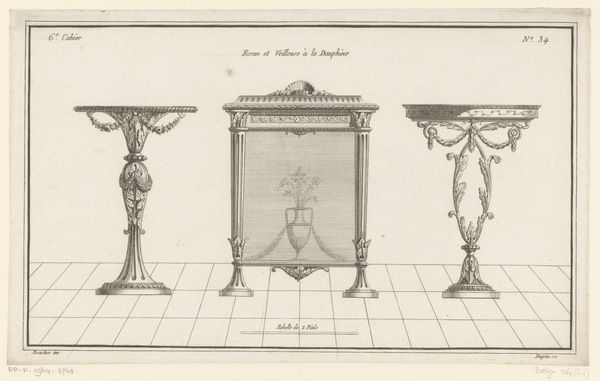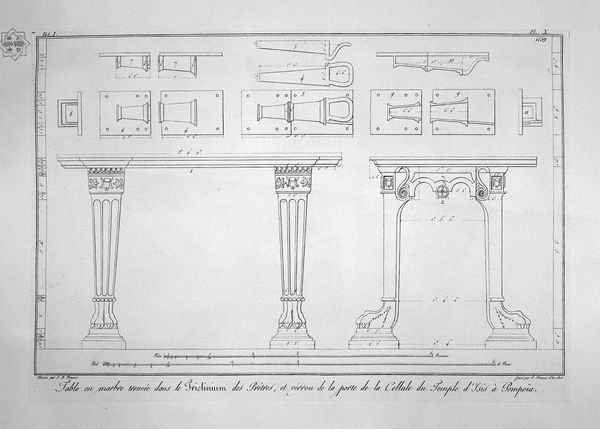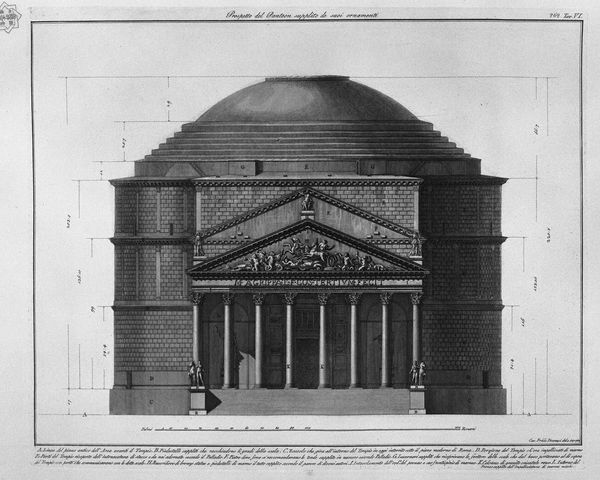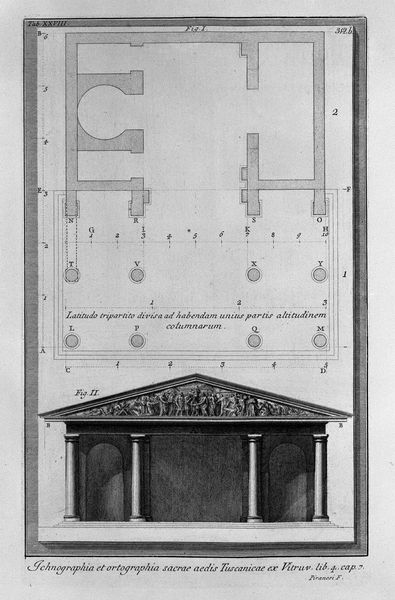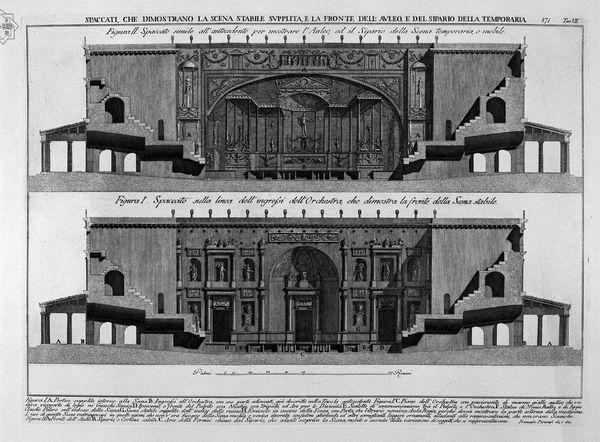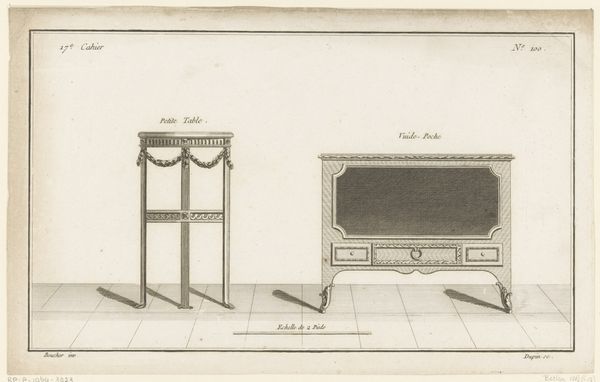
print, engraving
# print
#
geometric
#
ancient-mediterranean
#
arch
#
line
#
cityscape
#
pencil work
#
history-painting
#
academic-art
#
engraving
Copyright: Public domain
Giovanni Battista Piranesi made this etching of a wall in a Pompeian house in the 18th century. What's interesting is not just the image itself but the context of its production, which speaks volumes about the cultural dynamics of the time. Piranesi was part of a growing movement of artists and scholars captivated by the rediscovery of Roman antiquity. Pompeii, preserved by volcanic ash, became a focal point. The etching's careful detail preserves the paintings and architectural structures of Pompeii for scholarly record. But it also caters to a rising taste for the antique among Europe's elite. This interest in the past wasn't just aesthetic; it was deeply tied to ideas about power, legitimacy, and cultural identity. By representing this wall in print, Piranesi democratizes Roman society and allows those who cannot travel to Pompeii to see the architectural discoveries. To fully understand this print, we might delve into the history of archaeology, the Grand Tour, and the print market in 18th-century Europe. The meaning of art is always contingent on its social and institutional context.
Comments
No comments
Be the first to comment and join the conversation on the ultimate creative platform.
